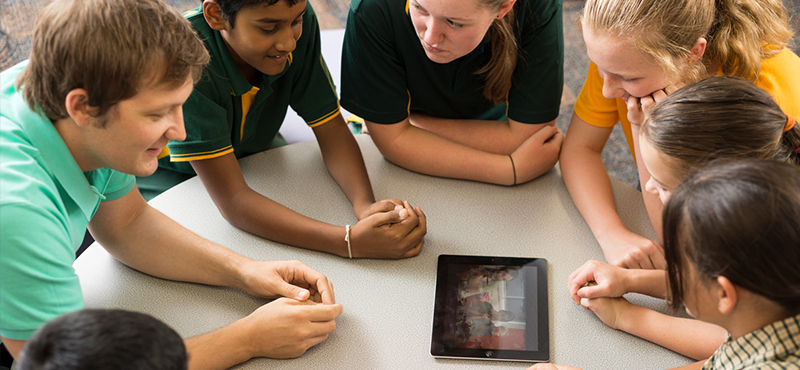The problem
Decisions affecting children’s lives are made every day. What should the school curriculum include? What equipment should the local playground have? What community programs should councils offer? Then, when children don’t actively engage in their studies or community spaces, we ask ourselves why.
So, is there a better way to find out what children need?
The solution
In partnership with Australian Department of Education, local communities and importantly, children, we found a better solution. Children were engaged directly and involved in the decision-making to ensure their voices were heard.
As mandated by the United Nations Convention on the Rights of the Child, UniSA’s Children’s Voices and Citizenship Research Program (CVCRP) focused on how children’s voices can inform government policy and practice.
As part of CVCRP, UniSA researchers developed UniSA’s Children’s Voices principles, which involved talking with children about their lives and needs, collecting their responses and encouraging them to become involved in decisions that affect them.
UniSA’s Professor Pauline Harris, who holds the Chair in Early Childhood (Research), and her team have helped industry adopt these principles when developing government policy and priorities for community planning and children’s literacy programs. These include South Australia’s 2012 child development legislation, 2013-2014 Child/Student-led Child Friendly Asset Audits and 2016 SA DECD’s Children’s Voices Connecting Communities document, which guides the ongoing development of Child Friendly SA. CVCRP principles have also been embedded into UNICEF’s Child-Friendly Cities Toolkit to ensure children’s inclusion in decision making.
“We have engaged end-users with the voices of over 5,000 children to date. This engagement has influenced state policies, national Child-Friendly Cities approaches, community planning, children’s literacy, and the provision of educational resources,” Professor Harris says.
CVCRP has delivered improved communication approaches; specialist teacher and childcare educator training; more effective play space design and construction; and importantly it instilled a culture of valuing the input of under 18-year-olds, who account for 25 per cent of the South Australian population.

For Tracy Johnstone, Manager Community Services and Social Development from Campbelltown City Council, working with UniSA to apply the Children’s Voices principles was instrumental in securing funding for a play space.
“We used CVCRP principles after funding for a play space was threatened– children organised a petition, constructed a reasoned argument, and won an appeal to progress the play space. Inputting on play space designs, children regularly met the landscape architect, successfully argued to keep a tree destined for destruction, and actively monitored the builds’ progress,” Ms Johnstone said.
Along with the Campbelltown City Council, the Gawker and Onkaparinga councils also adopted CVCRP’s principles for a variety of projects, all becoming the first UNICEF Australia-recognised ‘Child Friendly Communities’ in 2015.
Internationally, the same communication and engagement activities were used for the Fiji Preschool Literacy Voices Project, a formal partnership between UniSA, the Fijian Ministry of Education and the National Council of Women Fiji. Children’s feedback obtained through this program informed effective and culturally relevant changes to imported literacy products.
This project impacted 273 families and developed literacy resources for approximately 40,000 preschoolers.
CVCRP’s principles built community capacity for fostering children’s literacy in their home languages and English. Children’s literacy learning was enriched, exceeding Fiji’s benchmarked preschool national literacy levels.
UniSA’s CVCRP has provided guidance on how to authentically engage in dialogue with young people; generated important insights into strategies that foster young people’s growth and participation; and shaped approaches taken by policy makers, educators and communities to empower children to be active contributors to decision-making.
Partners involved
![]()
Related services
Contact the Enterprise Hub
Get in touch with us to find out how we can support your business needs.
Make an enquiry online or call us to discuss your idea




